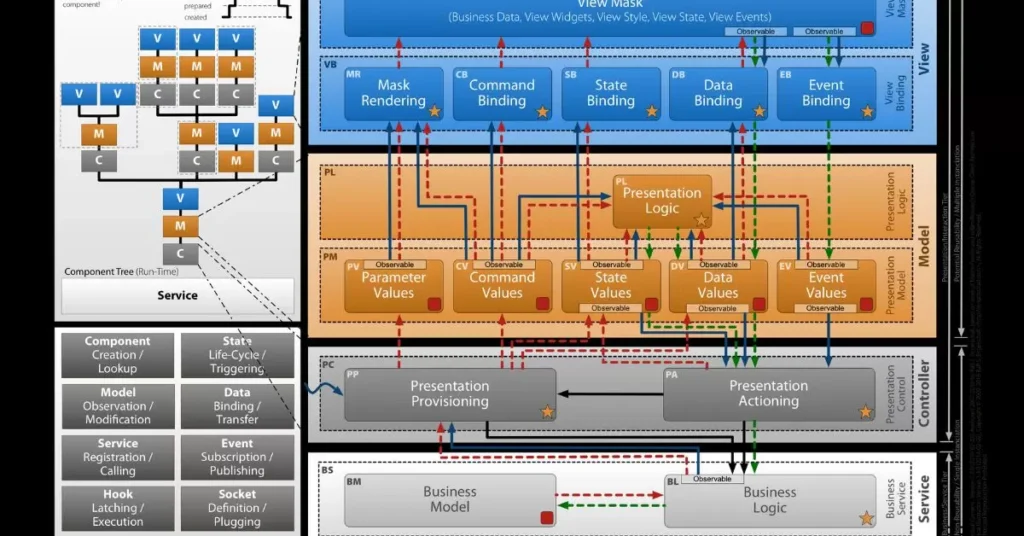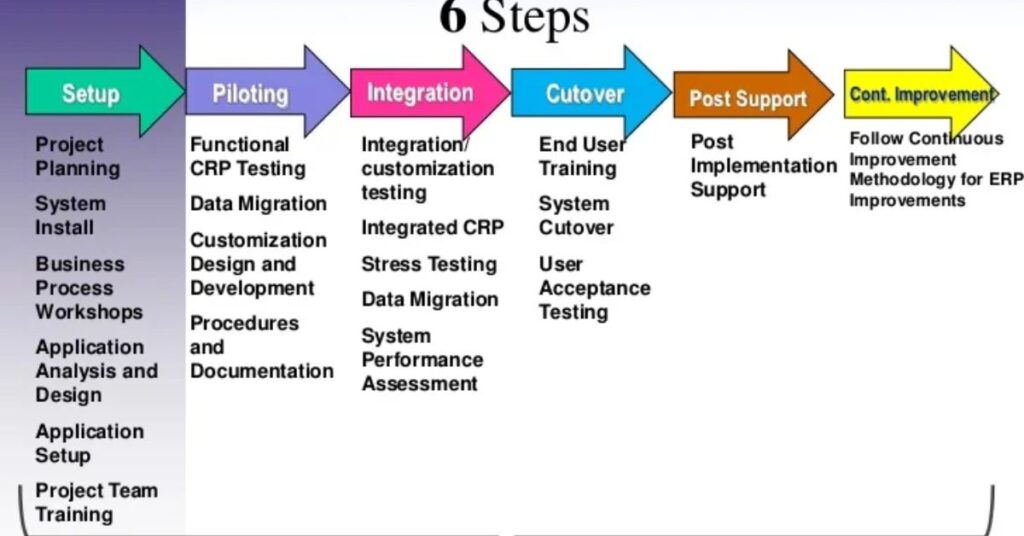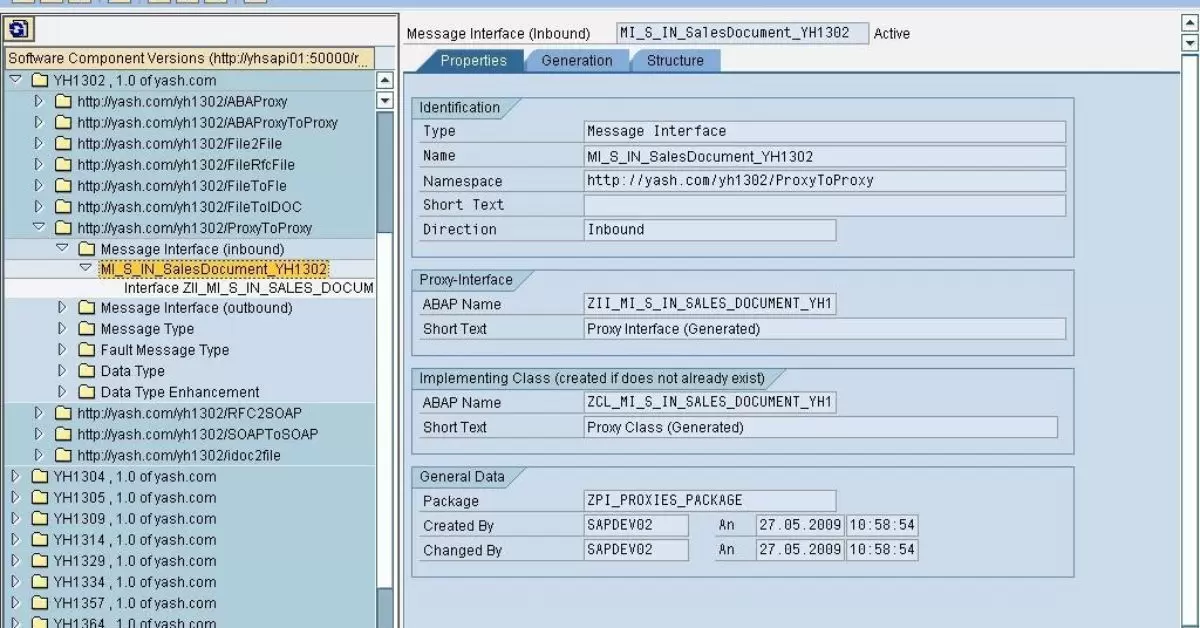Ever wondered how different software systems talk to each other? That’s where SAP interface development comes in. It’s like building a bridge between SAP and other applications, letting them share data smoothly.
Think of it as teaching different languages to your computer programs. One speaks SAP, another speaks something else. Interface development creates a translator, so they can understand each other perfectly. This process isn’t just about coding – it’s about solving real business problems.
The process of developing a SAP interface is, like embarking on a journey starting from the concept to the product. It begins with grasping the companys requirements and progresses, through design, programming and testing phases. The ultimate outcome? A smooth and efficient connection that simplifies work processes. Lets delve into the intricacies of how this transformation unfolds.
Understanding SAP Interfaces
SAP interfaces are like secret handshakes between different software systems. They allow SAP to chat with other programs, sharing info back and forth. Without these interfaces, your SAP system would be a lone wolf, unable to play nice with other business tools.
Think of SAP interfaces as translators at a global conference. They help SAP speak the language of other systems, making sure everyone’s on the same page. This teamwork between programs can supercharge your business, making everything run smoother and faster.
Initial Planning and Requirements Gathering
Before delving into the development of SAP interfaces it’s crucial to have an understanding of the project, at hand. This initial phase revolves around establishing an approach. It’s akin to mapping out a journey – you must have a destination in mind. Be prepared with all the resources, for the trip.
Here’s an overview of what takes place during this phase;
- Sit down with the folks who’ll use the interface
- Listen to their wishes and pain points
- Figure out what data needs to flow between systems
- Decide how often this data exchange should happen
- Map out any special rules or processes the interface needs to follow
By the conclusion of this stage you ought to possess an understanding of the tasks your SAP interface must perform. It’s akin, to possessing a plan to constructing a house. It directs all subsequent actions.
Related this post : Choosing the Right Motherboard A Comprehensive Guide
Designing the Interface Architecture

Think of interface architecture as blueprints for a house. It’s the strategy that illustrates how all pieces connect. We begin by outlining the data that must be transferred and its destination. This stage is vital as it establishes the groundwork, for all actions.
Good architecture makes the interface sturdy and flexible. It’s like building a house that can withstand storms and easily add new rooms. We consider things like security, speed, and how well it’ll work with other systems. The goal? Create a design that’ll serve the business for years to come.
Developing the Interface Specifications
Now we get into the nitty-gritty. Interface specifications are like detailed instructions for building each room in that house. We spell out exactly what data fields we need, how they should be formatted, and what happens in different scenarios.
This is the stage where we smooth out all the kinks. We collaborate closely with the business teams to ensure we understand all their requirements. It involves an effort, fine tuning the specifications until everyone is satisfied. Having detailed specifications helps prevent issues later on.
Setting Up Development Environment
It’s time to get down to work and prepare for the task. Setting up the development environment is akin, to gathering all the tools before diving into a project. We install the software establish connections, with testing systems and ensure that everyone is equipped with what they need to kickstart the coding process.
A good dev environment is key to smooth sailing. It lets developers test their work as they go, catching issues early. We’ve implemented version control to monitor modifications. The goal is to establish an environment that fosters both creativity and technical expertise. With the configuration the coding process becomes more streamlined and enjoyable.
Developing the Interface

Lets get down to work and begin constructing. With our blueprint, in hand it’s time to make it a reality. Developers dive into the code, creating the connections that’ll make our systems talk.
Creating code isn’t the focus. We always double check our work to ensure everything meshes seamlessly. It’s akin, to constructing with LEGO bricks. Every piece must snugly fit into its designated spot.
- Choose the right development tools
- Write clean, efficient code
- Create user-friendly interfaces
- Document the process for future reference
Also read this blog :The Role of Hard Drives in Modern Computing: An In-Depth Analysis
Testing the Interface
Time to put our creation through its paces. We test it with types of information to observe its responses, in scenarios. It’s similar to teaching a child how to ride a bicycle. We must ensure they can navigate through challenges, along the way.
We’re not just looking for big crashes. Even small hiccups can cause problems down the line. So we test, tweak, and test again. It’s all about making sure our interface is rock-solid.
- Run various test scenarios
- Check for data accuracy
- Test performance under heavy loads
- Simulate real-world conditions
Quality Assurance and Review
Now it’s time to play detective. We need to keep an eye out for any hidden bugs that may have slipped past us. It’s similar, to proofreading an email – we aim to catch every tiny error.
But we’re not just looking for errors. We’re also making sure the interface does what it’s supposed to do. Does it make work easier? Is it user-friendly? We ask these questions and more, polishing our creation until it shines.
- Conduct thorough code reviews
- Check against initial requirements
- Gather user feedback
- Make final adjustments before launch
Deployment Planning
Preparing to launch your SAP interface is similar, to getting ready, for a journey. It involves gathering the tools mapping out your route and ensuring everyone is onboard. This phase focuses on outlining the journey from beginning to end.
- Create a detailed timeline
- Assign roles and responsibilities
- Set up testing environments
- Prepare training materials for users
Implementation and Go-Live
It’s showtime! This is, like the debut of your SAP interface in the world. It’s akin, to the opening night of a play. All the preparation you’ve done is now being put to the test.
- Run final system checks
- Migrate data to the new system
- Train end-users
- Monitor system performance closely
Post-Implementation Support

Your SAP interface is up and running, but the work’s not over. Caring for a newborn is similar, to this stage. It requires attention and nurturing. You must remain vigilant for any issues. Be prepared to address them.
- Set up a help desk for user questions
- Monitor system performance
- Address any bugs or issues promptly
- Gather user feedback for improvements
Documentation and Reporting
- Create user manuals for different roles
- Document system architecture and configurations
- Develop troubleshooting guides for common issues
- Generate regular performance reports
- Record lessons learned during implementation
- Maintain a change log for system updates
- Prepare executive summaries for stakeholders
- Create visual aids like flowcharts and diagrams
- Establish a knowledge base for frequently asked questions
- Draft technical specifications for developers
Future Enhancements and Scaling
Now that your SAP interface is humming along, it’s time to dream bigger. What else can it do? How can it grow? This stage is about pushing boundaries and exploring new horizons.
- Identify areas for improvement
- Research new features or technologies
- Plan for increased user capacity
- Consider integrations with other systems
Remember, an SAP interface is never truly “finished.” It’s a living system that grows and evolves with your business. Keep listening to your users and stay open to new possibilities. The sky’s the limit!
Frequently asked question
What’s the biggest challenge in SAP interface development?
Aligning technical capabilities with business needs. It’s about bridging the gap between what’s possible and what’s practical.
How long does it typically take to develop an SAP interface?
It varies, but most projects take 3-6 months. Complex interfaces might need more time, while simpler ones could be faster.
Can SAP interfaces work with cloud-based systems?
Absolutely! Modern SAP interfaces are designed to play nice with both on-premise and cloud solutions.
Do I need to be an SAP expert to use these interfaces?
Not at all. Well-designed interfaces are user-friendly. You’ll need some training, but you don’t have to be a tech whiz.
How often should we update our SAP interface?
Regular updates are key. Aim for at least once a year, but be ready to make changes as your business needs evolve.
Conclusion:
Creating a SAP interface goes beyond linking systems; it’s, about unleashing opportunities. By connecting software we are paving the way for prospects. It’s akin to empowering your business with an ability enabling seamless information transfer, to where it’s most essential.
Just a heads up it’s not a “once and done” situation. Your SAP setup requires care and maintenance to operate. Stay curious continue learning and stay open, to ways to enhance it. The tech industry evolves rapidly so should your setup.













